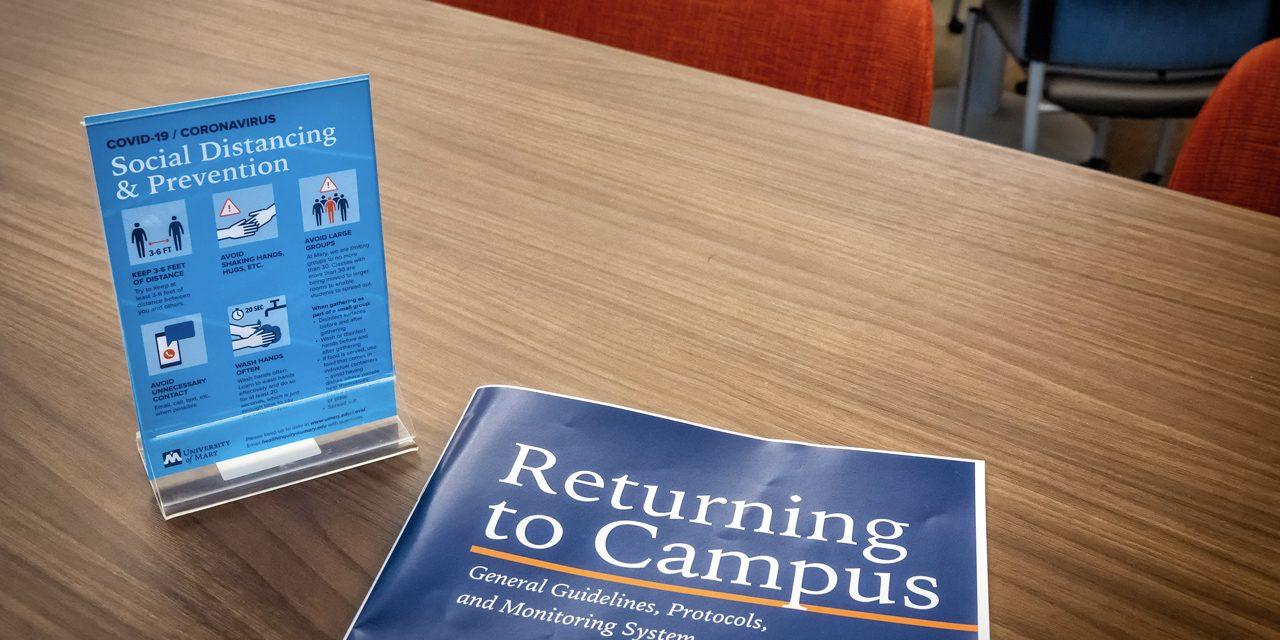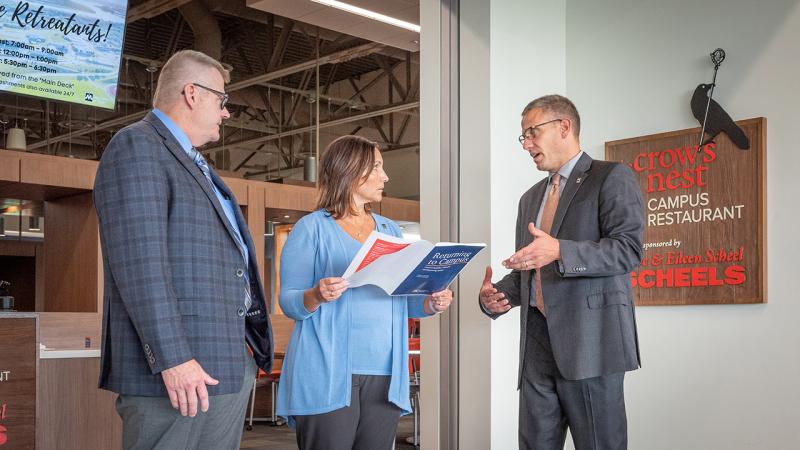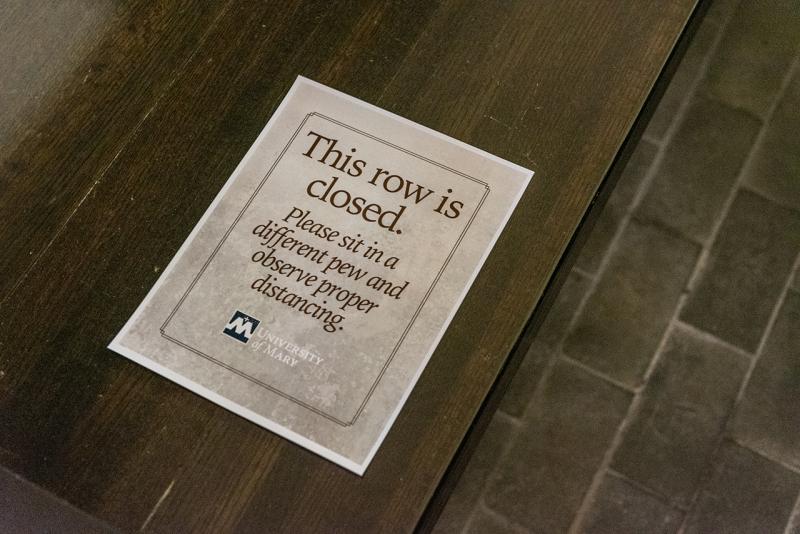University of Mary Rolls Out COVID-19 Guidelines and Protocols with New ‘Returning to Campus’ Document


BISMARCK, ND — Excitement is building for when University of Mary students, faculty and staff can all be back on campus together again for the first time since March 17. After nearly six months of online learning, summer time off, and people’s lives drastically altered because of the COVID-19 pandemic, the private, Catholic university in Bismarck, ND, will welcome everyone back, along with a new freshman class, on Tuesday, September 8, following a comprehensive Returning to Campus General Guidelines, Protocols and Monitoring System. The University of Mary released the plan today and made the document available online to its students, faculty, and staff at www.umary.edu/COVID.
The 18-page document, initiated by University of Mary’s 10-member Emergency Response Team (ERT), outlines several procedures and provisions for a safe, everyday experience on campus based on input, consultation, feedback and guidelines from various federal and state government entities.

Executive Vice President
University of Mary
“Our students are at the center of our hearts and all our concerns,” said University of Mary President Monsignor Shea. “The University of Mary’s policies and protocols for responding to the COVID-19 pandemic will continue to be primarily rooted in an ethic of care for our students, while also maintaining the safety of our faculty, staff, and of the public we interact with. Our campus is meant to be experienced as a true home for students, a place of stability where they can learn and grow, not a temporary place of residence.”
The University of Mary has implemented five, color-coded Risk/Action Levels to identify the level of risk for COVID-19 by utilizing guidance parallel to the North Dakota Department of Health System and the appropriate measures to be taken based on those risks. Each progressive level involves increased precautionary measures and actions: Level 1/ New Normal: Normal operations at capacity resume under heightened hygiene and cleaning standards. Level 2/Low Risk: Most operations continue at capacity while limiting seating and self-service in dining services, remote/online instruction is available upon request. Level 3/Moderate Risk: All gatherings are limited to 75 percent of capacity and dining services’ seating is limited to 75 percent capacity, with take-out meals readily available, social distancing is strongly encouraged and individuals in high-risk environments are screened regularly. Level 4/High Risk: Residential students remain on campus and commuter students refrain from entering campus, dining services’ seating is limited to 50 percent of capacity, no athletic or external events are held, all residential students receive take-out meals, students are randomly selected for testing. Level 5/Critical: All level 4 stipulations remain in force; all classes move to online, only essential employees work from campus.

“We want the students to still have a great college experience while protecting their classmates, our faculty, and the entire campus community — and it’s for that reason we are planning to begin the fall semester at the Level 3/Moderate Risk,” said Executive Vice President Jerome Richter. “We are all in this together. So, in order for this to work successfully, students, faculty and staff need to adhere to the designated guidelines and protocols at each specific ‘Risk/Action Level’ while always adhering to following universal standards based on the ND Smart Restart Color Coded Health Guidance System.
The University of Mary Office of Campus Safety and Security will continue to use 8000.umary.edu as the primary mode of communication and also utilize the text-based Emergency Notification System (ENS) to notify the community of changes to the Risk Level.

Should a student experience symptoms of COVID-19, the students will be asked to follow specific procedures, including contact the university’s Student Health Clinic and self-quarantine until further instruction from the clinic’s staff. If a student residing in a resident hall tests positive, he or she will be moved to a designated, sanitary area of campus housing where 58 beds are available. The student will remain isolated for two weeks, or until cleared by a health official, and will be cared for and provided food.
At the core of the guidelines are the UMary Smart Campus Protocols that include the following: Common Sense and Personal Accountability; Protective Hygiene and Cleaning; Risk to Vulnerable Members; Contract Tracing Responsibilities; Spiritual, Mental and Emotional Wellbeing (University Ministry and Counseling Services through CHI St. Alexius Health); and Communications. Also, as part of contact tracing, all students, faculty and staff, are urged to download the “Care19 Diary” app and/or the “Care19 Alert” app.

Starting August 1, all University of Mary students, faculty and staff are required to complete the Safe Colleges COVID-19 Training and Tracking Program before the start of the fall semester. This online training course prepares students, faculty and staff to better understand the novel coronavirus as well as take steps to reduce exposure at home, on campus, and through daily preventative actions.
Even as the University of Mary returns to in-person instruction, remote and online instruction will also be available for students, providing needed flexibility.
According to its website, The Chronicle of Higher Education is currently tracking individual colleges’ plans. Of the 1,200 colleges and universities surveyed, 55 percent plan for in-person reopening like the University of Mary; 10 percent intend to be exclusively online; 30 percent plan for a hybrid model; 3.7 percent are considering a range of scenarios; and 1.3 percent are still waiting to decide.
On May 4th, the university became one of the first higher learning institutions to announce its intention for resuming on-campus classes this fall.
